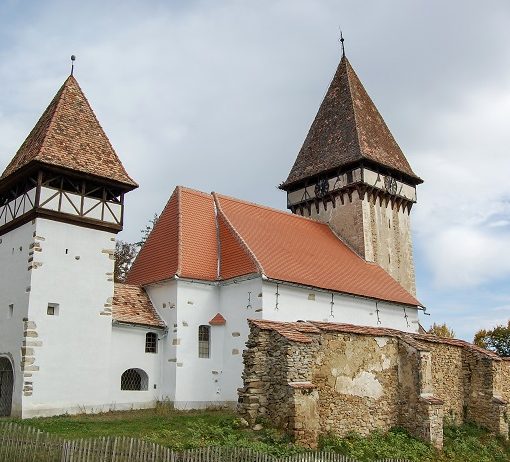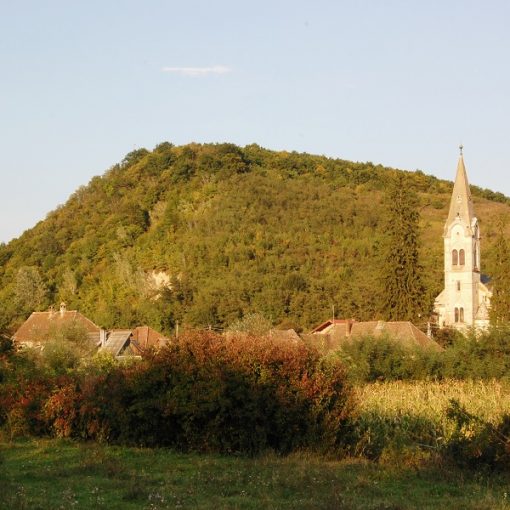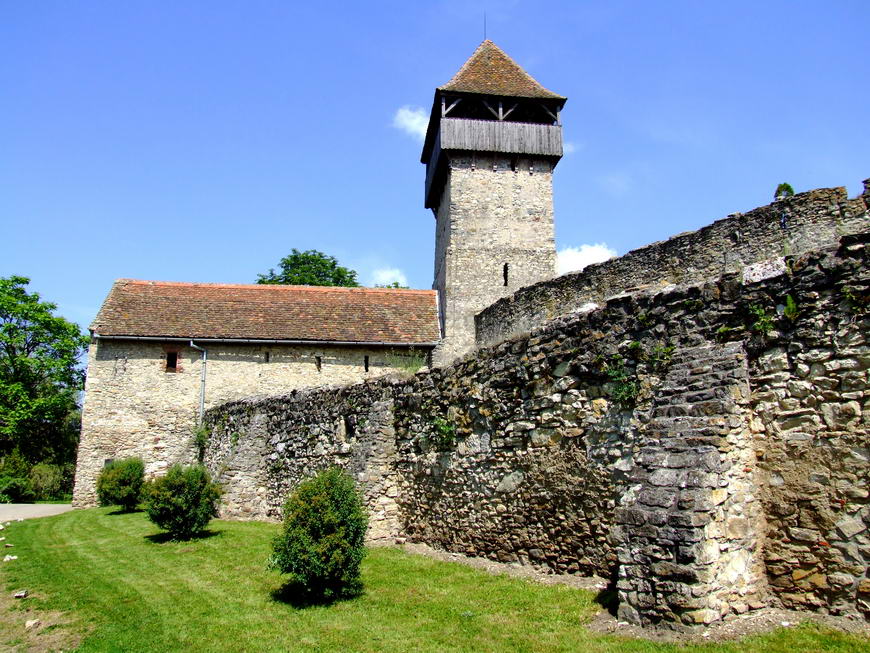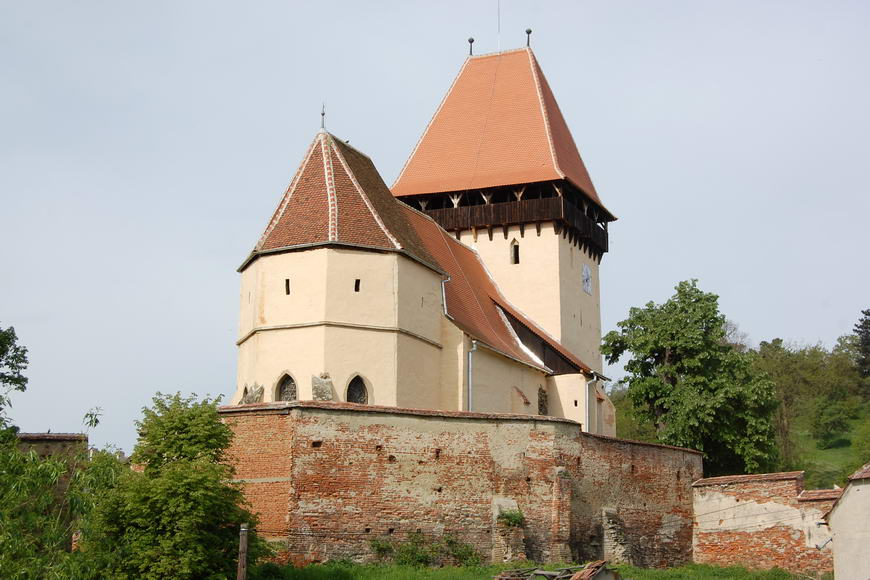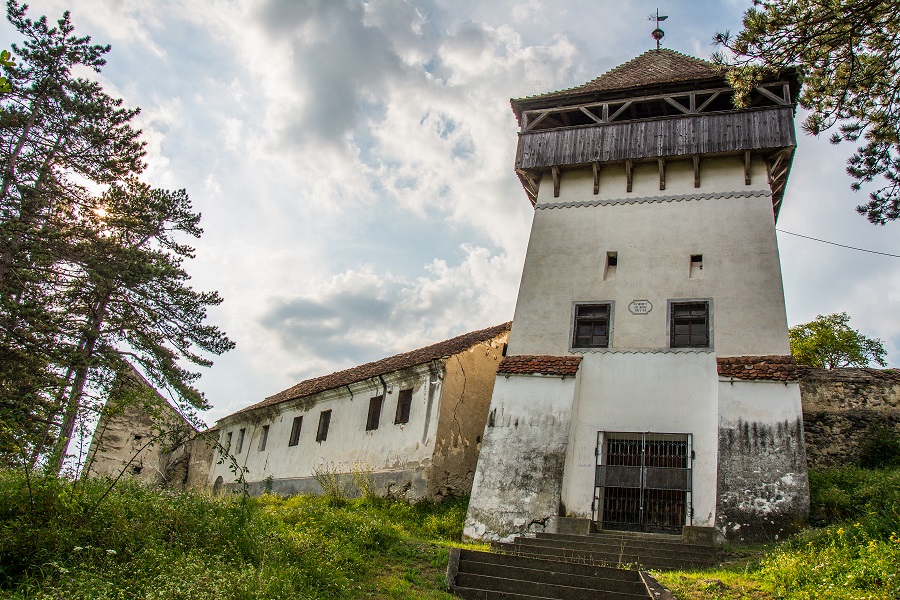
In the 13th century, a Romanesque basilica was built on the ridge above the village, of which the main nave with remains of old Romanesque twin windows and the west portal are preserved. Stones of Roman buildings from the area were used in the construction of the church. The two aisles were destro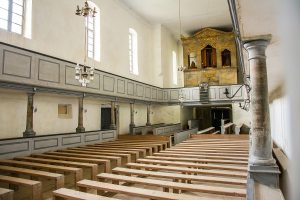 yed during the Tartar invasion in 1658, and the fortified church itself was smoked and taken over. Traces of the arcades that once connected the nave and aisles can still be seen today. The thatched roof of the makeshift church was only replaced by a shingle roof in 1702. One hundred years later, in 1802 and 1829, two earthquakes destroyed the bell tower, which was finally demolished in 1843. The circular wall appears heterogeneous: to the east, between the gate tower and the pentagonal tower, an older section, possibly from the 13th century, is preserved, while the three sides were built to the south, west and north in the 15th to 17th centuries. In more recent times a school building was built in place of the southern ring wall. The Baroque altar dates from the second half of the 18th century. In addition, a crucifixion picture from the 16th century hangs in the nave. Today’s organ was built in 1846 by Heinrich Maywald from Brașov.
yed during the Tartar invasion in 1658, and the fortified church itself was smoked and taken over. Traces of the arcades that once connected the nave and aisles can still be seen today. The thatched roof of the makeshift church was only replaced by a shingle roof in 1702. One hundred years later, in 1802 and 1829, two earthquakes destroyed the bell tower, which was finally demolished in 1843. The circular wall appears heterogeneous: to the east, between the gate tower and the pentagonal tower, an older section, possibly from the 13th century, is preserved, while the three sides were built to the south, west and north in the 15th to 17th centuries. In more recent times a school building was built in place of the southern ring wall. The Baroque altar dates from the second half of the 18th century. In addition, a crucifixion picture from the 16th century hangs in the nave. Today’s organ was built in 1846 by Heinrich Maywald from Brașov.
Activities
- 2022 Emergency work to stabilise the roofs on the church and two outbuildings
- 2018 Summer school at Bern University of Applied Sciences (concept development with a focus on architecture)
Contact:
Ev.Parish Rupea
+40/268/260 378

